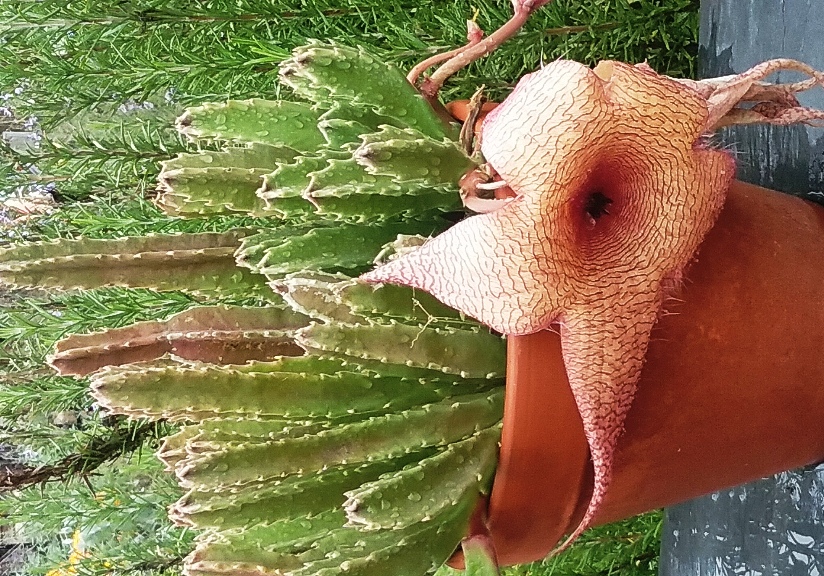
Stapelia & Huernia (stuh-PEE-lee-uh) / (H’WERN-ee-uh)
Apocynaceae
Relatives: Vinca, Oleander, Milkweed, Hoya
Stapelia is a genus of low-growing, spineless, stem succulent plants, predominantly from South Africa and a few from other parts of Africa as well. The flowers of certain species, most notably gigantea, can grow to sixteen inches in diameter when fully open. Most Stapelia flowers are noticeably hairy and have an odor of rotten flesh when they bloom, giving rise to their common name of "carrion flowers". A handful of species are commonly cultivated as houseplants and are even used in rock gardens in areas where the climate permits. Stapelias are good container plants and will grow well under full sun and light to moderate watering, as overwatering them will cause their stems to rot.
Huernia is a closely related genus from Eastern and Southern Africa and Arabia, named for Dutch botanist Justus van Heurne. Huernia flowers are smaller and more bell-shaped than Stapelia, and come in a range of textures – some matte and fuzzy and others glossy and shiny – in striking red or yellow colors. Like the Stapelia, Huernia flowers produce a carrion-like smell to attract flies, their main pollinator. In Southern Ethipoia, Huernia is cultivated on stone wall terraces unsuitable for other crops so that it can be available for eating during times of food shortage.